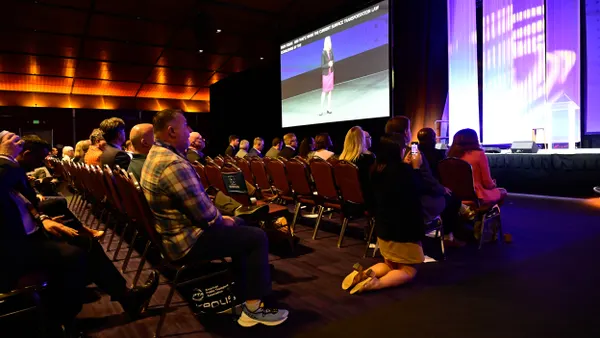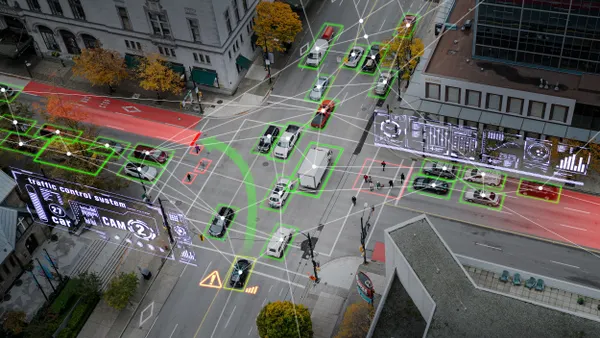Dive Brief:
- Berlin-based Ubitricity was named the first winner of the NYCx Climate Action Challenge for its technology that can convert existing light poles into electric vehicle (EV) charging stations. The company will launch a pilot in New York City, with the potential for a multi-year demonstration project putting Ubitricity chargers around the city.
- The company's technology installs outlets on lampposts, allowing drivers with smart charging cables to connect. The retrofit technology has been used in the United Kingdom, Germany and France; the New York City tests mark the first American use.
- Ubitricity beat out nearly three dozen companies for the climate challenge. Six finalists were named last June and were awarded up to $13,000 each to test their technology.
Dive Insight:
The tests fit in with New York's push to get chargers throughout the city to make electric vehicles more accessible and attractive. Mayor Bill de Blasio's administration has invested $10 million to put hubs with up to 20 fast chargers per site in each of the five boroughs. The city is also hosting a pilot program from Sprint for an autonomous robot that would charge EVs in a parking lot, starting in 2019. It's all meant to support the city’s goal of electrifying 20% of its vehicle fleet by 2025, part of its overall effort to meet the goals of the United Nations' Paris climate change agreement.
"Ubitricity's innovative solution could be instrumental in helping the City's achieve its climate action goal while simplifying the needs of electric vehicle users and future adopters," Jeremy Goldberg, Deputy CTO for NYCx in the Mayor's Office of the Chief Technology Officer, said in a statement.
The Ubitricity technology is a creative way to get charging infrastructure to New Yorkers who may lack residential parking or may have to compete for limited charging stations with other drivers. By putting chargers on street level in existing infrastructure, drivers can fuel up without going out of their way to find a charger. The technology relies on smart charging cables with built-in meters, allowing the city or utilities to charge users.
It has been used effectively in cities like Calais, France and London, where the government is investing heavily in roadside charging technology.










